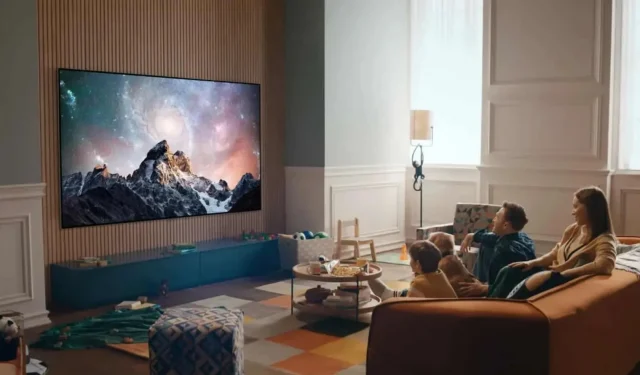While OLED screens offer stunning image quality and high contrast, they are still prone to burn-in. What it is? How to avoid it? We tell you everything.
OLED screens are known for two things: superb image quality with very high contrast levels that can be appreciated on a TV, PC monitor, smartphone, tablet or even handheld console, and the notorious screen burn-in. Fortunately, today technology has advanced so much that the latter is very rare. But it’s still quite possible. Here’s what to do to avoid damaging the screens.
What is OLED screen burn-in?
Burn-in can occur when a permanent image is displayed on the screen for too long. OLED screens can leave a ghost image due to the way they work. After all, each pixel of the screen is illuminated individually, and not by zones, as on LED panels. This means that each OLED pixel can turn on, turn off, and change color depending on what it needs to display. This is why the panel is able to offer very deep blacks and such impressive contrast levels, but it also means that each pixel can be damaged or overworked, eventually causing the pixels to change.
The main culprits for burn-in are interface elements in video games, apps and other menus of streaming services, for example, as well as TV channel icons or static splash screens that can be displayed for long hours.
There is a small risk that you will notice a burn during “normal”use. The image must be displayed for hundreds or even thousands of hours to really damage the screen. And burn-in is less likely to happen on a recent OLED screen, thanks to technologies designed to exactly counteract this.
At the same time, slight distortion or discoloration can be noticed after several tens of hours, even on the newest panel. And once it is there, it cannot be made to disappear. It can often be seen on the windows in stores that display the same images all day long.
How to prevent a burn
There are a few points to follow in order not to burn your OLED screen.
Vary what you do on the screen
This is the most obvious. Change what you display on the screen regularly to avoid displaying static images for too long. For example, if you always watch beIN, check Eurosport or another channel from time to time to prevent the beIN logo from appearing as halos. If you play Call of Duty a lot, try Apex Legends or Destiny. And if you spend all day on YouTube or Twitch, watch in full screen mode so you don’t have to see the interface for hours.
Adjust the brightness
Changing what you display on the screen helps ensure nothing is displayed for too long, but brightness also plays a role in burn-in. This happens faster on very bright screens. Turning it down and enabling auto-brightness as well as auto-standby after a few minutes of inactivity can mitigate the risks.
And don’t go to extremes. Try to stay in the 70-80% range for brightness. The same goes for auto dimming and auto standby or off. No need to set every 10 or 30 seconds, 10 to 30 minutes is more than enough. The goal here is to make sure the screen doesn’t keep displaying the same thing at maximum brightness all day long.
Use dark mode and similar settings
Some devices have very interesting parameters. Enabling dark mode for your operating system and apps is especially useful for OLED screens, pixels will be completely disabled for black. The iOS accessibility settings also have an “Extra-dim”mode in Android 12 and an option to “Reduce white point”or something else related to brightness.
It is not necessary to apply all of these measures at the same time to avoid screen burn, but the more of them, the less the chance of permanent damage to the screen.


